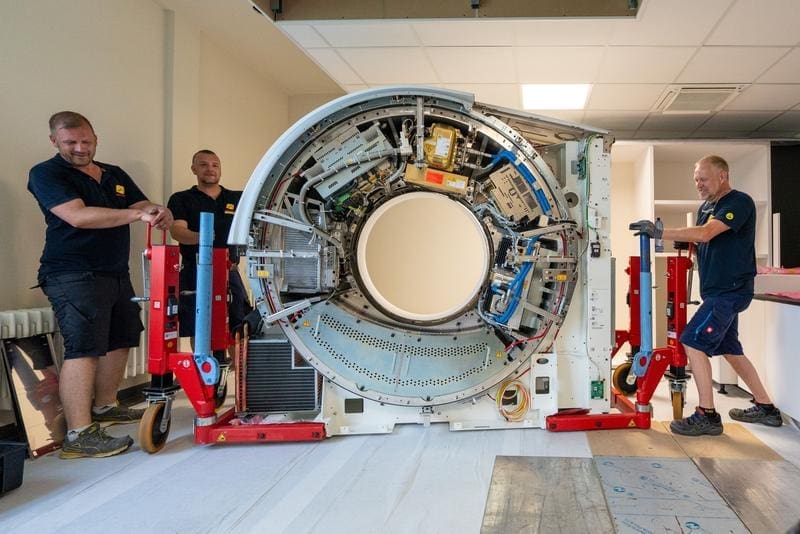World’s first photon-counting CT for radiotherapy installed in Dresden
On June 23, 2025, the OncoRay – National Center for Radiation Research in Oncology in Dresden received the world’s first single-source photon-counting computed tomography (PCCT) for radiotherapy. This innovative device, the NAEOTOM Alpha.Prime from Siemens Healthineers, counts every X-ray photon that passes through the patient and provides more detailed images with comprehensive anatomical and functional information. Researchers at OncoRay now want to investigate and quantify the benefits of this technology for radiotherapy, in particular proton therapy.
OncoRay, supported by the Helmholtz-Zentrum Dresden-Rossendorf (HZDR), the Faculty of Medicine at TU Dresden and the Carl Gustav Carus University Hospital, is a pioneer in proton therapy. Back in 2019, the center introduced the DirectSPR method, which calculates the penetration depth of protons more precisely and reduces safe spaces around tumors by around 35 percent. However, this was only applicable to immobile tumors, such as in the head or pelvis. The new PCCT technology is intended to close this gap by making the DirectSPR method usable for moving tumors as well, thus enabling more patients to receive more precise, gentler therapy.

PCCT technology promises higher image resolution, lower radiation doses or a combination of both. It could predict the proton range even more precisely, further reduce safety margins and make irradiation more gentle. Prof. Christian Richter, Head of Medical Radiation Physics at OncoRay, sees photon counting detectors as the future of CT technology. Prof. Mechthild Krause, Director of OncoRay, emphasizes the importance for translational research, while Prof. Esther Troost, Head of Image-guided Radiation Oncology, expects a gradual introduction into patient care and possible predictions of therapy response.
The installation of the PCCT, financed with two million euros from the Federal Ministry of Education and Research (BMBF), will run until mid-July 2025. Around 2,500 tumor patients are treated at the Clinic for Radiotherapy and Radiation Oncology every year and could benefit from this innovation.
The articles in the news section are produced by X-Press journalist office
Gender note. The personal designations used in this text always refer equally to female, male and diverse persons. Double/triple references and gendered designations are avoided in favor of better readability.




